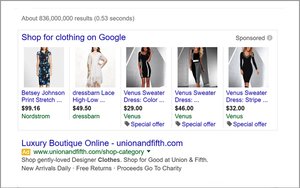 Google will soon require all marketers selling products with a Global Trade Item Number (GTIN) to include it in the product data feed for all product listing ads (PLAs).
Google will soon require all marketers selling products with a Global Trade Item Number (GTIN) to include it in the product data feed for all product listing ads (PLAs).
The new policy change, which has a deadline of May 16, 2016, requires marketers to include the GTIN for each item that is a new brand-name product sold by multiple merchants.
The change
will not affect vendors who only sell unique, used, custom, handmade, or vintage products. Basically, if there is no GTIN because the vendor is the only person who makes that product, or because it is
so old that it predates the GTIN system, then the advertisers is not not required to use any unique product identifiers, explains David Grow, digital media manager at Chacka Marketing.
If
you manufacture a product yourself and have an MPN and Brand, but no GTIN, then you should include the MPN and Brand in your feed. It is possible for a product to not have a GTIN but to have an MPN
and brand, Grow explains.
advertisement
advertisement
"Everyone else must use GTIN and Brand, with MPN recommended," Grow said.
The feed specifications note a list of attributes that marketers need to provide for
products to list in Google Shopping. Some attributes are required for all items, some are required for certain types of items, such as apparel, and others are recommended, per Google. Failure to
provide a required attribute may prevent that particular item from showing up in Google Shopping results. In other words, Google will disapprove products that do not meet the GTIN requirements.
The move is intended to improve the clicks on impressions for PLAs, according to one marketer, who claims to
be aware of some "really nasty stuff going on with regards to policy changes with PLAs that Google has not communicated in writing to the industry."
"Broader searches will be less affected and
brands that sell exclusive product lines may see little to no impact," said Mark Ballard, senior director of research at Merkle. He doesn't see the policy change as significant.
"We think the
bigger changes have been around formats and search partners," he said. "Google made PLAs bigger on mobile results in late 2015 and significantly ramped up the amount of traffic being produced by its
search partners, which include major retailers that run PLAs on their sites and Google’s own image search property."
Ballard said Google has thrown around some big numbers such as the
GTIN policy change will drive up conversion rates 20% or clicks up 40%, but he believes those cases will become the exception.